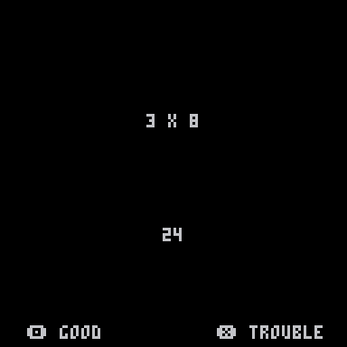Philashcards (Jam Version)
PHILASHCARDS (Jam Version)
Maintained, editable, unshrunk version: (to be uploaded)
This is a prototype of a flashcard protocol I devised. It is based on my math-nerdy experimentation whilst training dogs. I have found it to be an optimal framework for efficient exposure to learning experiences, in this particular case flashcards.
For this demo, I've just made it use multiplication facts, 2-9 and permuting. As boring as that may be for many, it is good material for witnessing its capabilities in optimizing rote memorization.
How It Works
The deck consists of a "focus", which is a set of three cards, and the "queue", which is the remainder. The program is always merely iterating over the three cards in the focus, but they are dynamically replaced with other cards one at a time.
After pressing the O or X button (Z or X on keyboard) or after three seconds pass, you will be given two options for judgement of your performance on the card shown.
"Good" means you met your expectations for recall, fluency, or whatever metric you want to go by. "Trouble" means you did not. If in any amount of doubt, just select Good. It will come back around at the right time.
Every card has only three attributes: the front, the back, and the grade. The grade begins at zero. When you judge a card Good, several things happen:
- Its grade increments by one.
- A new card at the top of the queue is drawn.
- The Good card is moved from the focus to an index in the queue equal to the nth Fibonacci number, where the sequence begins with 1 and 2, and n = grade.
- The new card occupies the slot in the focus where the Good card was.
When you judge a card Trouble, the grade is simply reset to zero, and it does not move.
P.S.
I didn't have time to implement the visual effects I wanted, but I will be updating the non-jam version to make it a little flashier and easily allow you to create your own deck.
| Status | Prototype |
| Category | Tool |
| Platforms | HTML5 |
| Author | sevenhearted |
| Tags | pico1k |

Leave a comment
Log in with itch.io to leave a comment.